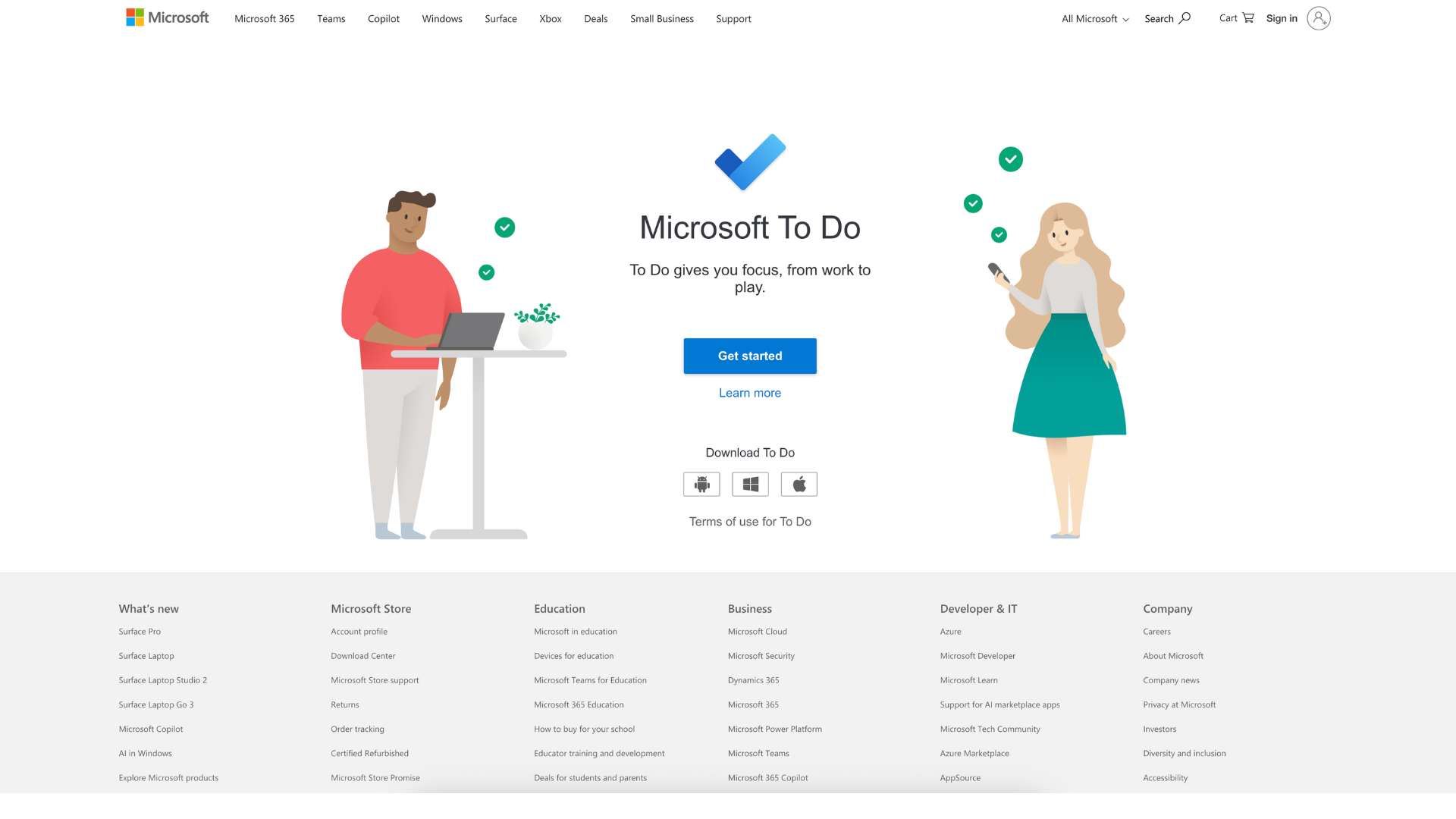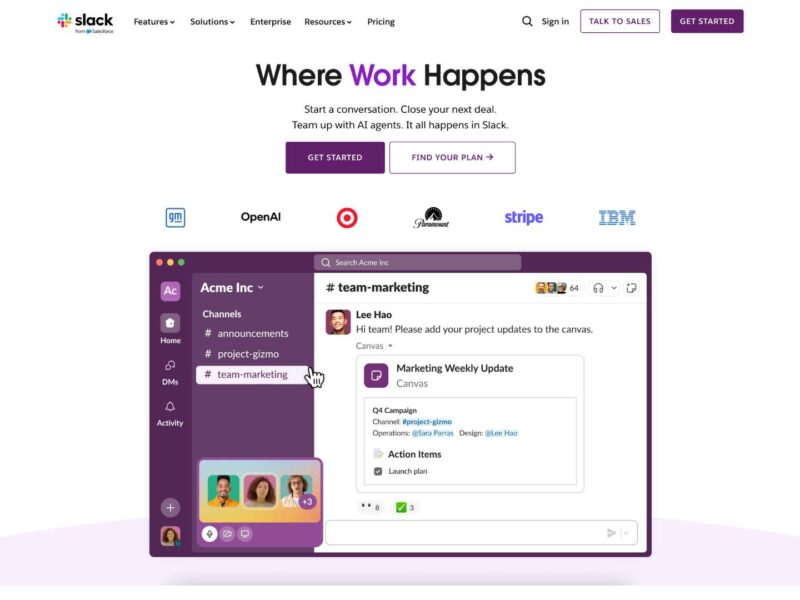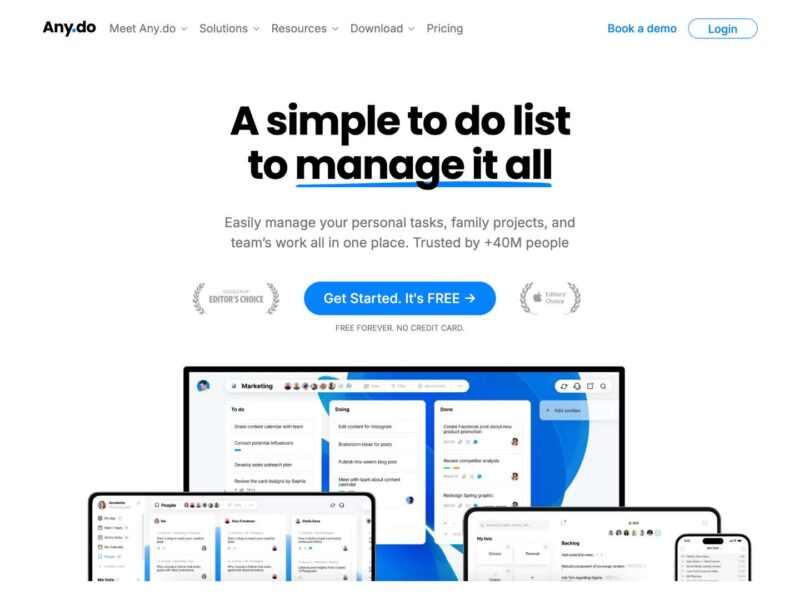Microsoft To Do Review (2025): Features, Pricing, Pros & Cons
Microsoft To Do is a free task management app built to help users organize their personal and professional lives.
Developed by Microsoft and integrated into the Microsoft 365 ecosystem, the tool aims to offer a clean, simple, and effective way to capture tasks, create lists, set reminders, and plan daily priorities across devices.
Originally introduced in 2017 as the successor to Wunderlist (which Microsoft acquired in 2015), Microsoft To Do has evolved to become a go-to solution for individuals, students, and professionals who rely on Microsoft services.
Its tight integration with Outlook, cross-device syncing, and zero-cost access make it especially appealing for those already embedded in the Microsoft ecosystem.
Who Is Microsoft To Do For?
Microsoft To Do is ideal for:
- Individuals looking for a lightweight, intuitive task manager
- Students organizing classes, assignments, and due dates
- Professionals managing work through Microsoft 365 or Outlook
- Remote workers and personal productivity enthusiasts who prefer free, cross-platform tools
Company Background
Microsoft Corporation, founded by Bill Gates and Paul Allen in 1975, is one of the world’s largest technology companies. Headquartered in Redmond, Washington, Microsoft is known for its Windows operating system, Microsoft Office Suite, Azure cloud services, and enterprise software.
Microsoft To Do was created after the acquisition of Wunderlist. The team behind Wunderlist joined Microsoft to develop a native replacement with modern architecture and deeper integration into the Microsoft ecosystem.
Since then, Microsoft To Do has become part of Microsoft 365 and Windows, receiving continuous updates focused on simplicity, productivity, and synchronization across devices.
Website: https://todo.microsoft.com
Key Features
Microsoft To Do keeps its features focused, prioritizing a clean experience over feature bloat. Here’s a detailed look:
Task Management
- My Day View: Daily planning interface that resets each morning to encourage prioritization. Tasks are suggested based on deadlines and importance.
- Recurring Tasks: Schedule tasks to repeat at daily, weekly, monthly, or custom intervals.
- Subtasks / Steps: Break larger tasks into smaller, actionable items with individual checkmarks.
- Due Dates and Reminders: Add deadlines and time-based reminders for each task.
- Starred / Important Tasks: Mark priority items with a star for emphasis.
Lists and Projects
- Custom Lists: Group tasks under named lists such as “Work”, “Home”, or “Groceries”.
- List Sharing: Share lists with others and collaborate on simple workflows or family errands.
- Task Assignment: Assign individual tasks to collaborators in shared lists.
- List Grouping: Create folders to group multiple lists under a broader category like “Work Projects”.
Calendar and Outlook Integration
- Microsoft 365 Sync: Tasks created in Outlook appear in To Do and vice versa.
- Calendar Events: View tasks alongside calendar entries via Outlook and Teams integration.
- Planner Integration: Sync Planner tasks (from Microsoft Teams or Project) into To Do using the “Assigned to Me” list.
Cross-Platform Syncing
- Microsoft Account Integration: Sync tasks automatically across Windows, Mac, web, iOS, and Android.
- Cloud-Based Storage: Tasks and lists are securely stored in the Microsoft cloud.
Customization and Accessibility
- Themes & Backgrounds: Change the look and feel of each list with unique colors or background images.
- Dark Mode: Available across all platforms.
- Accessibility: Screen reader compatibility, keyboard navigation, high contrast modes.
User Interface and Experience (UI/UX)
Microsoft To Do delivers a minimalist, distraction-free design that feels familiar to any Microsoft 365 user.
- Design Language: Follows Fluent Design, matching other Microsoft apps like Outlook and Teams.
- Simplicity: Clean UI with side navigation, drag-and-drop task ordering, and clear labeling.
- Mobile Apps: Full-featured mobile apps for iOS and Android with push notifications, widgets, and offline support.
- Desktop Apps: Native Windows and Mac apps with identical layouts to the web version.
- Onboarding: Quick tutorials for new users and tooltips that appear contextually.
Overall, the UI/UX is straightforward, elegant, and non-intimidating—perfect for beginners and casual users.
Platforms Supported
| Platform | Supported | Notes |
|---|---|---|
| Web App | Yes | Access via any browser at todo.microsoft.com |
| Windows | Yes | Pre-installed on most Windows 10/11 devices |
| macOS | Yes | Downloadable from the Mac App Store |
| iOS | Yes | Supports widgets and Siri Shortcuts |
| Android | Yes | Available on Google Play with Material UI |
| Offline Mode | Yes | Tasks can be accessed and edited offline; syncs when online |
| Cloud-Based | Yes | All data is stored in the Microsoft cloud |
Pricing
Microsoft To Do is 100% free to use with all core features included. There are no premium upgrades or hidden tiers.
| Plan | Cost | Features |
|---|---|---|
| Free | $0 | All task management, syncing, reminders, collaboration, and Outlook integration |
While Microsoft To Do itself is free, using it with some features—like full Outlook/Teams/Planner integrations—may require a Microsoft 365 subscription.
Pros and Cons
Pros
- Completely Free: No subscriptions or limitations on key features.
- Deep Microsoft Integration: Syncs seamlessly with Outlook, Teams, and other 365 tools.
- Cross-Platform and Cloud-Based: Use it anywhere, on any device, with automatic syncing.
- Simple and Intuitive UI: Easy for beginners; nothing to configure or overthink.
Cons
- Limited Project Management Tools: No Gantt charts, task dependencies, or timeline views.
- Basic Collaboration: Lacks advanced team features like reporting, roles, or permissions.
- Not Ideal for Complex Workflows: No automations, APIs, or third-party integrations outside Microsoft’s ecosystem.
Customer Support and Resources
| Support Type | Availability |
|---|---|
| Help Center | Yes – Microsoft Support portal |
| Email Support | Via Microsoft 365 Support |
| Community Forum | Yes – Microsoft Answers and Tech Community |
| Tutorials | Available via Microsoft Learn and YouTube |
| In-App Help Tips | Yes – contextual tooltips and My Day suggestions |
Microsoft’s support infrastructure is massive, but for To Do-specific help, most users rely on documentation and community Q&A.
Real-World Use Cases / Ideal Users
1. Students
Track homework, class schedules, reading assignments, and exam dates using recurring tasks, due dates, and My Day planning.
2. Office Professionals
Use it as a personal planner alongside Outlook and Teams. Easily convert emails into tasks and sync meetings with reminders.
3. Remote Workers
Plan your day using the “My Day” view while syncing tasks across devices. Collaborate with teammates by sharing grocery-style lists for basic group planning.
4. Busy Parents or Couples
Create shared lists like groceries, chores, vacation planning, and errands. Assign items to each person and get updates in real time.
User Reviews and Ratings
| Review Platform | Rating | Summary |
|---|---|---|
| G2 | 4.4/5 | Praised for its simplicity and Outlook integration |
| Capterra | 4.6/5 | Popular among Office 365 users; good entry-level tool |
| Trustpilot | 4.5/5 | Generally positive feedback from personal users |
User Quote (G2):
“I use Microsoft To Do to keep track of everything from work tasks to grocery lists. It’s simple, free, and connects perfectly with Outlook.”
— Jamie T., Project Coordinator
Best Alternatives
| Tool | Best For | Comparison to Microsoft To Do |
|---|---|---|
| Todoist | Cross-platform, power users | More advanced task management, filters, labels |
| TickTick | Personal productivity + habits | Includes Pomodoro timer and habit tracker |
| Things 3 | Apple-exclusive, premium UI | One-time purchase, elegant design |
| Asana | Team project management | Better suited for structured team collaboration |
| Notion | Notes + Tasks + Databases | Combines task lists with rich documentation tools |
Summary
Microsoft To Do stands out in 2025 as a reliable, clean, and completely free task manager for individuals and light collaboration. It’s not a heavyweight project management platform, but it doesn’t try to be.
Instead, it focuses on the fundamentals: creating tasks, setting reminders, organizing lists, and syncing across devices—with deep Microsoft 365 integration to make it even more powerful for existing users.
If you’re already using Outlook or Teams, Microsoft To Do is a natural companion. And if you simply want a cross-platform task list that works without fuss, it’s one of the best free options available today.
Try it at todo.microsoft.com, or compare it with other productivity tools at usefully.site.
Media
How to Use Microsoft To Do – Complete Tutorial
The Simple Brilliance of Microsoft To Do


